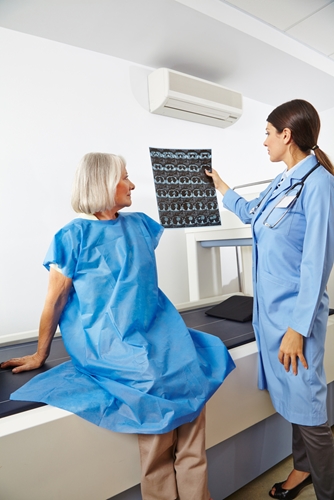In a study published in the February issue of the Journal of the American College of Cardiology, medical imaging researchers at Los Angeles Biomedical Research Center compared the diagnostic accuracy of coronary computed tomography angiography to invasive coronary angiography in detecting lesion-specific ischemia, reported Health Imaging. The investigators concluded that there was no significant difference in quality between the two diagnostic processes.
The study enrolled 252 patients from five countries, with the median age of 63. Fractional flow reserve was used as the reference standard.
Traditional Versus CT Angiography
The traditional angiography procedure involves the insertion of a catheter into the groin or the arm of a patient, which is then threaded through the femoral artery and the aorta into the coronary arteries. Once the catheter is in position, a dye is injected and X-ray images are recorded. The resulting images are used to detect restrictions and blockages in the arteries. Though invasive coronary angiography remains the go-to procedure for diagnosing high-grade coronary stenosis, its drawbacks include higher costs and medical risk.
According to the National Heart, Lung and Blood Institute, coronary angiography tests can sometimes lead to complications, including bleeding and pain at the site of catheter insertion, blood vessel damage and allergic reactions brought on by the dye used during the test. Other, less common risks include kidney damage, blood clots and a buildup of fluid in the heart.
Conversely, a CT angiography is non-invasive. Patients undergoing a CTA scan receive an intravenous injection containing the dye. The patient is then put through the scanner, where special detectors pick up images from X-rays passed through the body. The entire procedure takes an average of 15 minutes.
The CTA poses significantly fewer risks. These include a small risk of radiation-related cancer and, again, the risk of allergic reaction to the dye. The National Institutes of Health labels this procedure as painless.
CTA: A Viable Alternative
In a paper published in the American Heart Association Journal in 2015, researchers Giulio Stefanini and Stephan Windecker assessed whether CR angiographies could replace the traditional invasive procedure. When CTA first emerged in the early 2000s, it was limited by insufficient spatial resolution. However, these initial scanners have been vastly improved upon with the advent of the 64-slice, 320-slice and dual-source scanners.
Approximately 6 million CTA scans were conducted in 2005, reported AuntMinnie.com. That number is expected to grow to 8 million within a year. However, a more recent study presented at the 2015 annual meeting of the Radiological Society of North America revealed that diagnostic imaging for coronary artery disease is on the decline.
"In the recent years, there has been considerable downward pressure on the use of cardiac imaging," Dr. David Levin, a professor emeritus at Thomas Jefferson University in Philadelphia and the study's lead author, told AuntMinnie.com. "This has come from things such as appropriate use criteria developed by both the American College of Radiology and the American College of Cardiology; the Choosing Wisely campaign; reductions in reimbursement, mostly with the technical components; and high deductible health plans as well."
Levin also cites the high equipment cost and specialized software needs as factors contributing to the decline in CTA use.
Despite these trends, he still believes the use of CTA scans will increase due to the number of recent studies that validate its efficacy.
"I think the use of coronary CTA will increase and it will be mostly among radiologists," Levin said. "We in radiology should be promoting the use of coronary CTA, and we should be pointing out to referring physicians – not just cardiologists, but primary care doctors – that coronary CTA is the best first imaging test for coronary artery disease."
Ronny Bachrach
Latest posts by Ronny Bachrach (see all)
- Konica Minolta Debuts First-of-Its-Kind Digital U-Arm System at AHRA - July 27, 2016
- Researchers Detect Signs Of Stroke Risk Using MRI - June 27, 2016
- Imaging Biz: Q&A with David S. Channin MD: How to Make PACS Patient Centered - June 22, 2016










